Context for Conflict
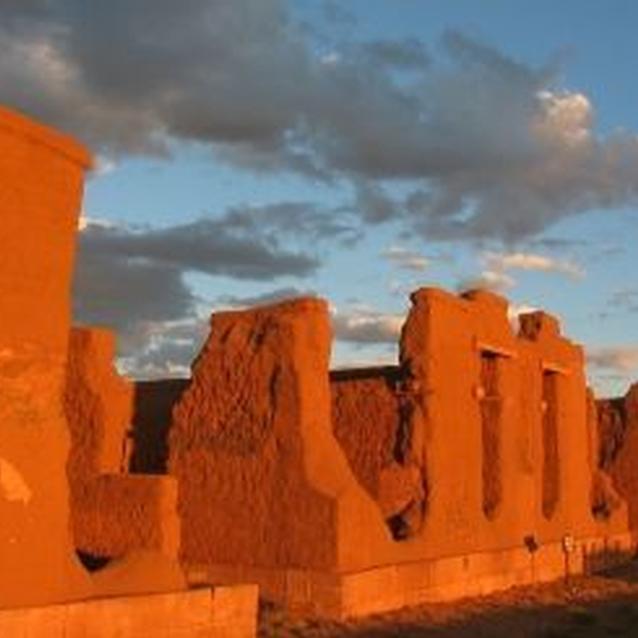
National Park Service, Fort Union National Monument
The Civil War. For many Americans this conflict evokes images of the storied battlefields of North and South and of dramatic changes in the lives of Americans of African and Anglo descent. Lesser known is the story of the people of Spanish ancestry who participated in this epic conflict and of the many battles that took place in the West, in areas of large Hispanic populations and strong Spanish heritage.
Like all Americans, Hispanics were deeply affected by the Civil War. When the conflict erupted, they lived in all parts of the country. Some traced their ancestry to explorers who settled in North America generations ahead of the English. Many had suddenly found themselves classified as Americans when the United States expanded its boundaries. Others were recent immigrants from Spain and Latin America, drawn to the United States to improve their lives. When the nation split in two, many were forced to choose whether to support the Union or the Confederacy. Some had little choice as they were swept into the maelstrom.
From the first shots at Fort Sumter, South Carolina, in 1861 to the last action at Palmito Ranch, Texas, in 1865, many Hispanics made a conscious decision to join the fight: some for the Union and some for the Confederacy. They responded to a variety of motives, public and private. They represented all socio-economic levels, from wealthy aristocrats fighting to preserve a way of life to impoverished laborers seeking to improve their fortunes. Patriotism, personal gain, regional conditions, and history all played a role in their decisions. By the close of the war, more than 20,000 Hispanics had participated in the bloody conflict and thousands of Hispanic civilians had lent hearts and hands on the homefront, weaving their own individual stories into this important national fabric.
Spanish Roots in American Soil

National Park Service, Castillo de San Marcos National Monument
People of Spanish heritage established roots in North America centuries before the Civil War. Following the arrival of Columbus in 1492, many explorers rushed to claim the "New World" for Spain, including the mainland of North America. As early as 1526, Spanish settlers attempted to colonize the shores of what is now South Carolina. This effort failed, but in 1565 Spain established St. Augustine, Florida, the first permanent European settlement in the present-day United States. Other explorers pushed inland. In 1539, Hernando de Soto landed on the coast of Florida and began a winding journey that would carry him across the Mississippi River. In 1540, Francisco Vásquez de Coronado marched from Mexico to explore much of the land that comprises the modern US Southwest. Two years later, Juan Rodríguez Cabrillo set foot on California's coast. This push north- and westward continued with the establishment of trading posts, missions, colonies, and towns. By the 1700s, Spain claimed ownership of much of the continent. On July 4, 1776, while the American colonies in the East boldly declared independence from Britain, the Spanish were celebrating the founding of San Francisco on the other side of the continent.
Imperial rivalries and the emergence of the United States of America would carve away this huge empire. By the mid-1800s most of the Spanish lands in North America were gone, now occupied as states and territories of the United States. But a Hispanic population remained, most notably in the Southeast and the Southwest, and these citizens were drawn into the conflict that swept the nation in 1861.
Soldiers in the Southeast
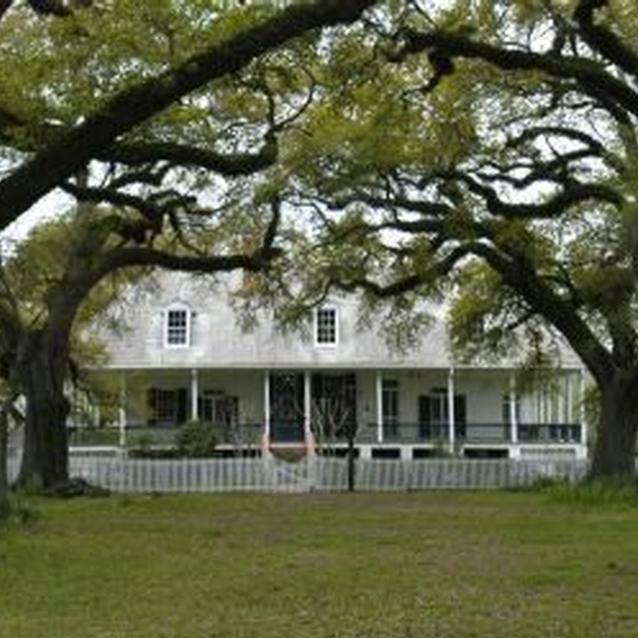
National Park Service, Cane River Creole National Historical Park
In the Southeast, Hispanics commonly supported the Confederate cause. Many of Spanish ancestry lived in the Gulf Coast region of Alabama, Mississippi, and Louisiana-lands that had once been Spanish West Florida and Louisiana. This population represented a rich mixture of cultures and languages: French, Spanish, Caribbean, American Indian, African, German, and Anglo American. These "Creoles" were often well-to-do planters with plantations or established merchants with homes in the bustling ports of New Orleans and Mobile. Many held slaves. Others made their money through the cotton trade that relied on the "peculiar institution" of slavery. Part of the aristocracy of the region, these citizens joined their like-minded southern neighbors and actively fought to preserve their way of life.
In Louisiana, Hispanics lent their arms to actions both nearby and far afield. Many Hispanics in Louisiana had immigrated from the Canary Islands in the late 1700s. New Orleans mustered nearly 800 Hispanics as part of the "European Brigade," a home guard of 4,500 to keep order and defend the city. The brigades of Brigadier General Harry T. Hays's and Brigadier General William E. Starke, popularly known as the "Louisiana Tigers," included native Louisianans of Anglo and Creole descent, plus men from Spain, Cuba, Mexico, and other Latin American countries. Both brigades campaigned with Confederate Gen. Robert E. Lee and fought at battles such as Antietam and Gettysburg.
Other Gulf Coast states also mustered Hispanics into the military. One Alabama company, the Spanish Guards, was made up exclusively of men of Spanish ancestry and served as a home guard for the city of Mobile. Alabama's 55th Infantry, which served in the Vicksburg, Atlanta, and Nashville campaigns, and Florida's 2nd Infantry, which fought at Antietam and Gettysburg, included significant numbers of Hispanic soldiers as well.
Confederate sympathizers included Hispanic women like Lola Sánchez, from a large Cuban family living near St. Augustine, Florida. Angered that her father had been accused of being a Confederate spy, Sánchez took on that role herself. When Union troops occupied her Florida home, she overheard their plans and informed nearby Confederates of a pending raid. Forewarned, Confederate forces turned the tables and captured the Union troops.
The Minorcans, a Hispanic group from the Balearic Islands in the Mediterranean, colonized parts of Florida in the mid- to late 1760s under British auspices. A century later, a number of their descendants served in the Confederate Army and Navy. Some also served for the Union. One of the most notable was Stephen Vincent Benét. Born in St. Augustine, he graduated from West Point in 1849. During the war, he taught the science of gunnery there. In 1874, he was appointed Brigadier General, Chief of US Army Ordnance. His grandson, named for him, went on to write significant prose and poetry about the Civil War.
Soldiers in the North
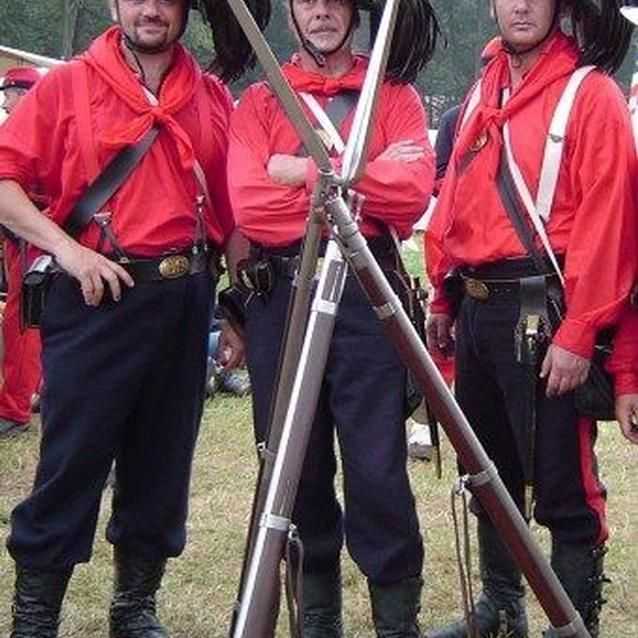
Cpl. Vito SanFilippo
Not all Americans of Spanish ancestry lived in the South. Northern states also had significant Hispanic communities, and many of their members supported the Union cause. Most came from large urban centers like Philadelphia, New York, and Boston. In addition to large populations of Germans, Irish, and Eastern Europeans, these cities attracted immigrants from Spain, Portugal, Cuba, Puerto Rico, and Mexico. Many of these newcomers sought to integrate themselves into the society of their new homeland but faced daunting racial prejudices. Serving in the uniform of a US soldier was the quickest and best way to reach their goal of becoming an "American."
Puerto Rican immigrant Lieutenant Augusto Rodríguez served in the 15th Connecticut Regiment. He protected the Union capital in the defenses of Washington, D.C., and courageously led his men in battle at Fredericksburg. At the close of the war Rodriguez left the army but continued his life of service fighting fire in the city of New Haven.
Born in Cuba but raised in the United States, Lt. Col. Julius Peter Garesché was educated at West Point. His contribution to the war was the ultimate one. While serving as Chief of Staff to Lt. Gen. William S. Rosecrans during the battle at Stones River, Garesché was decapitated by Confederate cannon fire-a great personal loss for Rosecrans, whose friendship with Garesché was magnified by a deeply shared faith.
To escape their exposed position outside of Petersburg, Virginia, Lt. Col. Henry Pleasants devised an unusual plan to break the Confederate stranglehold on the city. Born in Argentina to a Hispanic mother and an American father from Pennsylvania, Pleasants came to the United States at age 13 and later became a mining engineer. He proposed digging a mine shaft under the Confederate line and blowing up the fortifications on the other side with four tons of gunpowder. The well-conceived but poorly executed "Battle of the Crater" failed, resulting in another eight months of fighting. For his ingenuity, Pleasants was promoted to Brevet Brigadier General, while the commanding officer was relieved of duty.
Anxious to fight, Luis F. Emilio, the 16-year-old son of a Spanish immigrant, lied about his age in order to enlist with the 23rd Massachusetts Volunteer Infantry. His bravery quickly earned him a promotion to sergeant. Selected as one of the officers of the 54th Massachusetts Regiment--one of the first African American units--Emilio soon rose to the rank of captain. In that role, he helped lead the 54th in its ferocious assault on Fort Wagner, South Carolina. The attack failed but was successful in demonstrating the bravery and ability of African American troops.
Like Rodriquez, Garesché, Pleasants, and Emilio, many men enlisted by individual initiative. In other cases whole groups of Hispanics signed up together. A prime example is the 39th New York Infantry. This regiment, called the "Garibaldi Guard" in honor of the famed Italian freedom fighter Giuseppe Garibaldi, was formed entirely of European immigrants. In addition to companies of Italians, Hungarians, Swiss, German, and French immigrants, the regiment included a company wholly composed of Spanish and Portuguese soldiers. Easily recognized in their distinctive European-style uniforms, the unit engaged in dozens of clashes, including Gettysburg and the major campaigns of the Army of the Potomac.
Sailors: North and South
Some of the most dramatic fighting of the Civil War occurred on the high seas where Hispanics fought with valor in the navies of both sides. Dozens of Hispanic sailors served on Confederate vessels, helping in the dangerous task of breaking the Union blockade of southern ports. One of the most daring officers in the Confederate navy was Capt. Michael Usina. Born in St. Augustine, Florida, to Spanish parents, Usina started the war as a private in the 8th Georgia Volunteer Infantry. After suffering serious wounds in the battle at Manassas, he joined the Confederate Navy. As captain of several blockade runners, Usina made several harrowing escapes, always managing to avoid capture on his many successful missions.
Hispanic sailors served the Union with equal bravery and distinction. Spanish immigrant John Ortega enlisted in Pennsylvania and served as a seaman on the USS Saratoga. He risked his life on two occasions as he fought to maintain the Union blockade against the efforts of men like Usina. Philip Bazaar, of Chilean origin, faced a different danger. As a seaman on board the USS Santiago de Cuba, he was one of only six men to breach the Confederate works during the assault on Fort Fisher, North Carolina. Under heavy fire, he courageously delivered critical dispatches during the battle. For their valor "above and beyond the call of duty," both Ortega and Bazaar were awarded the Medal of Honor.
One of the most famous naval commanders in American history is David Farragut. Born to a Spanish father and an American mother, Farragut was raised in Tennessee and began his naval career when only nine years old. He served in the War of 1812 and the Mexican War and was 60 when the Civil War broke out. Though he lived in the southern state of Virginia at the time, he remained loyal to the Union. Farragut soon earned praise for commanding a successful naval expedition against Confederate New Orleans. This venture reestablished Union access to the strategically important Mississippi River Valley and Farragut was rewarded with the newly established rank of vice admiral. Farragut is perhaps most celebrated for his capture of Mobile Bay in 1864. There, in the midst of battle, Farragut showed his disdain for the opposing fire by uttering the order that has been famously paraphrased as "Damn the torpedoes, full speed ahead!" In 1866, Farragut was promoted to full admiral, a rank the US Navy again created especially for this national hero.
Immigrants Fighting under Different Flags
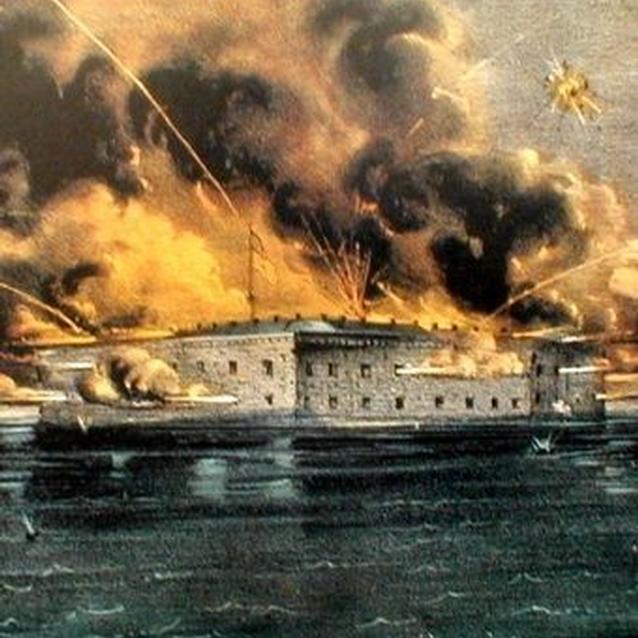
National Park Service, Fort Sumter National Monument
For Hispanics, like all other Americans, the decision of which side to support in the Civil War often came down to personal motives and desires. Hispanic citizens of the United States often acted to preserve a lifestyle and defend lands that they had occupied for generations. Immigrants often had to choose based upon newly-established ties. The examples of Federico Fernández Cavada and Ambrosio José Gonzalez demonstrate that men of similar backgrounds often found themselves on very different paths.
Cavada was born in Cuba in 1832. Following the death of his Spanish father, he moved to Philadelphia, the hometown of his American mother. Despite growing up and completing his education in the United States, he retained a strong attachment to the land of his birth. He also developed a fierce hatred of slavery so, when the Civil War erupted, he enlisted in the US Army. Beginning his service as an engineer, the talented Cavada quickly rose to the rank of lieutenant colonel. He commanded the 109th Pennsylvania Infantry in the battle at Chancellorsville and the 114th Pennsylvania Infantry at Gettysburg, where he was captured by Confederate forces and imprisoned.
Ambrosio José Gonzales also claimed Cuba as his land of birth. Born to a prominent family in Matanzas, his father sent him to school in New York following the death of his mother. Gonzales later completed his education at the University of Havana and began a career as a professor in his homeland. He also participated in the movements to liberate Cuba from Spanish rule and developed ties with Americans, mostly Southerners, who wanted to annex Cuba to the United States. His efforts to overthrow the Spanish failed, and Gonzales settled into exile in Beaufort, South Carolina. There he married into a prominent Southern family. When war came, Gonzales naturally supported the Confederacy, earning a commission as a colonel. He earned commendation for his conduct in the bombardment of Fort Sumter and was soon promoted to Chief of Artillery for the Department of South Carolina, Georgia, and Florida, and commanded the Confederate artillery in the battle at Honey Hill, South Carolina.
Following the Civil War, Cavada and Gonzales found common cause in the effort to liberate the land of their birth. Gonzales only briefly returned to Cuba, but continued to support his countrymen in their efforts to gain independence from Spain. One of those freedom fighters was Cavada. The one-time Union officer returned to Havana as a US consul but soon resigned his post to join the Cuban army. There, his military skill helped him rise to the position of commander of all Cuban revolutionary forces. In 1871, however, while traveling to secure supplies from supporters in the United States, he was captured by Spanish troops. Despite pleas for leniency from US President Ulysses S. Grant, the Spanish army executed him by firing squad.
Soldiers in the Southwest
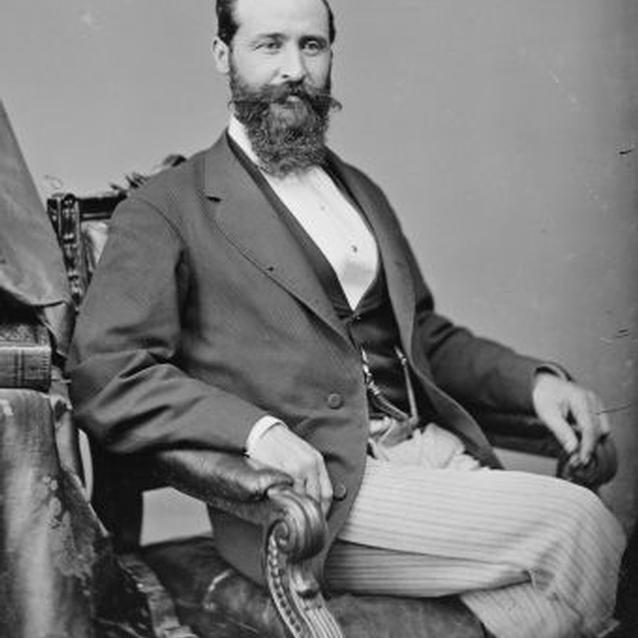
Library of Congress
By far, the highest levels of Hispanic participation in the Civil War occurred in the states and territories of the Southwest. Following war with Mexico (1846-1848), the victorious United States acquired vast portions of Mexico's northern territories. More than 100,000 Mexicans lived on these lands and with the stroke of a pen became citizens of the United States. These residents of Texas, California, Arizona, and New Mexico soon found themselves immersed in a national dispute over the expansion of slavery into the West. When war erupted, they had to choose sides.
They often faced difficult choices. Slavery had been banned by the Mexican government and only a few dozen enslaved African Americans lived in the arid lands of west Texas and New Mexico. Many Hispanics opposed the idea of bringing the institution into their homeland and endorsed Union efforts to prevent it. Nevertheless, owners of crop lands in New Mexico-a group that included some wealthy Hispanics and Anglo Americans--often relied on the coerced labor of American Indians and shared some of the views of their slave-holding counterparts in the South. Other Hispanics harbored bitter feelings toward the US government as a result of the Mexican War and demonstrated their disapproval by supporting the Confederacy. The political influence, trade connections, and geographic proximity of the South also drew many Hispanic ranchers and farmers closer to the movement to secede from the Union.
The result was a scattering of loyalties. Texas became a stalwart supporter of the Confederate cause, but Hispanics--particularly those along the Rio Grande frontier with Mexico--divided in their support for the Union. In New Mexico, lucrative links to Missouri and the southern states via the Santa Fe and Butterfield Trails encouraged some Hispanic residents to lean toward the Confederacy while others maintained Union ties. California was also split. Union sentiments prevailed in the northern reaches as stronger Confederate leanings developed in the predominately Hispanic southern part of the state. By the time the first shots of the war were fired at Fort Sumter, Texas had joined the Confederacy. California remained, uneasily, a part of the Union.
Between these two states, the vast New Mexico Territory became a point of contention. Confederate leaders who hoped to gain access to the gold and silver mines and the strategic ports of California needed control of New Mexico to do so. In mid summer 1861, Lt. Col. John R. Baylor led the 2nd Texas Mounted Rifles into New Mexico, drove away Union defenders, and occupied the town of Mesilla. Establishing Mesilla as a capital, on August 1, 1861, Baylor declared that the southern portion of New Mexico had now become the Confederate Territory of Arizona. He later divided the territory and waited for Capt. Sherod Hunter and his Arizona Rangers to occupy Tucson, which would serve as the capital of a second judicial district, solidifying Confederate control of the area.
Hunter's troops faced limited resistance. Union soldiers in Arizona forts had been ordered to support the war on the east coast and before leaving had burned their buildings and stores to prevent them from falling into Confederate hands. The departure of Union troops left Hispanic and Anglo Americans in the region unprotected from bands of Apache raiders and local outlaws that roamed the region. Fearing for their lives and property, these settlers had little choice but to accept protection from Confederate troops. Hunter's mounted riflemen entered Tucson without resistance, and on February 14, 1862, President Jefferson Davis officially proclaimed the Territory of Arizona as part of the Confederacy. A critical link between Texas and California had been established.
The Union took measures to prevent Confederate expansion westward. President Abraham Lincoln had wisely selected territorial officials from within the local community, ensuring that leaders would remain loyal to the Union. In the New Mexico Territory, he appointed as governor Henry Connelly, who had married into a prominent Hispanic family. In September, Connelly called out the militia to defend the Union cause.
The ranks of the New Mexico Volunteers were soon filled with "Nuevo Mexicanos" (Hispanic New Mexicans). Many of the volunteers lacked formal military training. Nevertheless, these descendants of Spanish pioneers were excellent horsemen, knew the terrain, and had experience in combat against Apaches, Navajos, Utes, and Comanches, making them prized soldiers and scouts. A few, like Capt. José Sena, who had practiced law in Santa Fe prior to the war, and Capt. Rafael Chacón, a graduate of a Mexican military school, had professional skills that made them even more valuable to the Union cause. The New Mexico units were commanded primarily by Hispanic officers.
The fight for New Mexico escalated. In early 1862, Confederate Brig. Gen. Henry Hopkins Sibley pushed northward with 2,500 troops from Fort Bliss, Texas. Sibley's goal was to seize Fort Craig on the Río Grande south of Socorro in order to strengthen the Confederate foothold in New Mexico. Col. Edward R.S. Canby, the Union commander of the fort, moved to halt this assault. On February 21, 1862, his 3,800 troops, including 2,500 Hispanic soldiers of the New Mexico Volunteers and militia, engaged the Confederates at Valverde. The Confederates won the day, but heavy casualties convinced them to abandon their advance on Fort Craig. Although defeated, the New Mexico Volunteers under commanders J. Francisco Chaves and Christopher "Kit" Carson fought admirably.
Meanwhile, Confederates in Tucson found themselves threatened by Col. James H. Carleton's "California Column," a force of California Volunteers guided by Hispanic scouts familiar with the trails and water sources of the region. On April 15, 1862, these Californian troops skirmished with Confederates near Picacho Pass, 45 miles northwest of Tucson. The Confederates prevailed in this clash--the westernmost engagement of the Civil War--but the "California Column" continued marching and occupied Tucson soon thereafter.
The decisive battle of the New Mexico campaign, however, took place in the northern part of the territory. Following the battle at Valverde, Confederate General Sibley continued northward along the Río Grande with the goal of seizing Fort Union via Santa Fe. Upon reaching Albuquerque, he received news that 2,000 "Pikes Peakers" or Colorado Volunteers under Col. John P. Slough were coming to bolster the Union cause. On March 28, Confederate and Union troops clashed on the rugged terrain of Glorieta Pass. The fierce battle swayed back and forth throughout the day with neither force gaining an advantage. The conclusive action of the clash took place at Apache Canyon near Johnson's Ranch on the west side of the mountain pass. There, Union forces, guided by Lt. Col. Manuel Chávez, attacked and destroyed the Confederate supply train. The loss of food and ammunition obliged the Confederates to abandon the field and Glorieta belonged to the Union.
The failure at Glorieta, often called the "Gettysburg of the West," spelled the end of Confederate designs on the West. Following an additional skirmish at Peralta, south of Albuquerque, the undersupplied, overextended, and outnumbered Confederates left New Mexico, ending their quest to create a gateway to California.
Following the Confederate abandonment of the New Mexico and Arizona territories, the Union quickly occupied many strategic points in the newly founded Territory of Arizona. Little known is the important role "Californios" (Hispanic Californians) played in this effort. Highly skilled on horseback and accustomed to working in excruciating heat, they made excellent cavalrymen. Serving under both Hispanic and Anglo officers, hundreds of soldiers from the First Battalion of Native Cavalry of the California Volunteers would prove their ability and loyalty by securing these vast lands for the Union, eliminating the intrusion of French imperialists who supported Maximilian's rule in Mexico and other backers of the Confederacy.
Texas remained critical to Confederate fortunes in the Southwest and some of the bitterest fighting occurred there with Hispanics serving on both sides. Here a civil war within a civil war occurred as "Tejano" fought "Tejano" (Hispanic Texans). Tejanos faced particularly complex choices as to where to place their loyalties. Living in a region where the institution was relatively scarce, slavery played less of a role in these decisions. Many had grown up on the northern frontier of Mexico as proponents of Mexican Federalism, a belief in regional autonomy that coincided with the states' rights policies of the Confederacy. Others had engaged in frequent clashes with US troops stationed on the border in the aftermath of the US-Mexican War and welcomed the removal of these forces from the region. Wealthy Tejano ranchers mirrored their Creole counterparts in Louisiana and were linked to the Confederate leaders of Texas by marriage, politics, and shared economic interests. Such was the situation of Santos Benavides, a member of a wealthy Laredo family who accepted the rank of colonel in the Confederate army.
Still Union sentiments remained strong among some Tejanos. Some opposed slavery and had no desire to support a government that promoted it. Others were Hispanics of the lower classes who had little interest in a Confederate social system that placed them at the bottom.
These differences occasionally produced strong political stands and even violence. When Texas first announced its secession from the Union in 1861, a group of 40 Tejanos led by Antonio Ochoa marched on the Zapata County seat to prevent local officials from taking an oath of allegiance to the Confederacy. Confederate troops responded by forcing Ochoa to flee across the border into Mexico. There Ochoa gained the support of Juan Nepomuceno Cortina, a Mexican general and folk hero, who had already gained a reputation as a fearless defender of Mexican American rights. From the safety of Mexico, Ochoa, Cortina and others attacked military and economic targets in south Texas, keeping Confederate troops constantly preoccupied. In one brutal attack, pro-Union raiders commanded by Octaviano Zapata rode to the ranch of a Confederate county judge and hanged him. Confederate retaliation was swift. Capt. Refugio Benavides led a company of cavalry into Mexico in pursuit of Zapata, killing 18 and wounding 14 of his men. Zapata escaped that time, only to die later at the hands of Refugio's brother, Santos Benavides.
Skirmishes gave way to full scale warfare as south Texas gained importance for the Confederacy. When Union ships blockaded Confederate ports in 1862, Texas border communities like Brownsville and Laredo became key ports for the export of Southern cotton. Wagon trains rolled into south Texas, where the cargos of this "white gold" were carried across the Río Grande and loaded on Mexican flagships that could sail safely past Union warships. This trade, established largely through the efforts of the Cuban-born, Harvard-educated diplomat José Agustin Quintero, helped maintain a vital line of trade for the cash-strapped Confederacy.
The United States attempted to cut this economic lifeline. In November 1863, a large Union force landed on the barrier islands of south Texas and occupied Fort Brown in the city of Brownsville. From this base, Union troops continued west in an attempt to capture Laredo and its cotton stores. Instead, on March 19, 1864, Col. Santos Benavides forced the invaders back down the Río Grande.
In the aftermath of the failed attack on Laredo, much of the Union invasion force withdrew from south Texas to fight in other arenas of the war. Confederate troops took advantage, sweeping back toward Brownsville and, after several skirmishes, retaking the city in July 1864. Only a small Union presence remained in the region, occupying Brazos Island on the Texas coast.
It was this small garrison that would fight the final action of the Civil War. Aware of the surrender of Confederate General Lee at Appomattox on April 9, 1865, the Union commander of Brazos Island made one final foray toward Brownsville on May 12-13. Confederate troops including Hispanic soldiers responded, and on the coastal plains near the mouth of the Río Grande at Palmito Ranch, they defeated the Union forces--a final Confederate victory in a lost cause.
Hispanics on the Homefront
The Civil War tested the will of civilians as well as soldiers, and Hispanics shared in the national suffering. This was especially the case in the old Spanish Southwest. Families went hungry as armies seized harvests or destroyed crops in the field. Deprivation and despair preceded and followed battles. Disease and death swept through communities in the aftermath of military campaigns. Though their saga is not as familiar as those in other arenas of the war, Hispanic civilians displayed their own heroism and resolve on the homefront. They pulled together as communities, adjusted to meet challenges, and, in some cases, even found opportunity in an era of destruction.
Socorro, New Mexico, illustrated the common fate of southwestern Hispanic communities caught in the line of fire. The planting season had just started when many men from the town were called to war. The people left behind tended the crops as best they could but managed only a limited harvest of corn and wheat. The town then fell in the path of Confederate troops. Union Col. Nicholas Pino attempted to halt the advance but ultimately surrendered the town to avoid the inevitable civilian casualties and damage that a battle would bring. Hungry Confederate troops pillaged the town, seizing food and supplies before moving on. Starvation and misery increased as bands of Apache and Navajo raiders attacked the town and took livestock. Militia troops under the command of Maj. Luis M. Baca finally returned to Socorro to defend the community from additional losses.
Men like Baca did what they could to protect their communities but with so many men called off to fight, women became the last line of defense for families and towns. Some fled danger for the safety of distant towns, ranches, family, and friends. Others stayed at home, determined to guard their property against hostile troops and bands of Apaches and Navajos. One such woman was Petra Pino, the wife of Jose Pino, a wealthy merchant and Confederate officer. She stayed on the family farm with her nine children throughout the Confederate occupation of Socorro. Her daily sacrifice was magnified by the death of her youngest child during these hard times.
Dolores Perea Connelly, wife of the territorial governor, experienced a different loss. Confederates retreating from the skirmish at Peralta on April 18, 1862 destroyed her home. Soldiers burned the hacienda, destroyed its fields, and took livestock and other property. "There was much about the house of goods and furniture that they could put to no useful purpose," Governor Connelly wrote, "yet all was taken or wantonly destroyed." Dolores Connelly and her family narrowly escaped this havoc.
Dozens of similar tales unfolded throughout the war-torn Southwest, sometimes involving Confederate supporters and at other times advocates of the Union. Through it all, women exhibited great strength of character and compassion. Petra Pino not only looked after her own family but also tended to Confederate soldiers in a nearby hospital. Others were equally kind. A. B. Peticolas, a private in the 4th Regiment of Texas Mounted Volunteers, described an unknown woman who, with tears in her eyes, offered food to the ragged and hungry troops as they moved north along the Rio Grande. Many other women offered shelter, sustenance, and care to the soldiers they encountered.
Hispanic people displayed great strength and resilience, overcoming the tragedies of war to rebuild their lives and communities. In some cases encounters between Hispanic women and soldiers would transform lives. Viviana Gómez met Karl Wengert, a German immigrant soldier sent to fight in the New Mexico Territory. The couple married and, after the war, established a business together in Taos, New Mexico. Wengert Plaza, the location of that business, survives today.
From Civil War to Civil Rights
As the Civil War drew to a close, this conflict became a symbol of freedom for many in the Spanish-speaking world. The unveiling of Lincoln's Emancipation Proclamation was cause for celebration. Slavery had already been banned in most of Latin America, and citizens of those nations believed abolition in the United States would prevent its reemergence. In Cuba, where slavery survived, abolitionists saw a chance to end the institution in their homeland. The United States also emerged as a symbol of national liberation. As Mexican President Benito Juárez battled French occupation, he received moral and material support from the Lincoln Administration. Cubans seeking independence from Spain also counted on support from the United States in their struggle. Cuban freedom fighter José Martí was only a youth of 12 when Lincoln was assassinated but many years later still recalled wearing a black armband to honor the slain president and the freedom that he symbolized.
In the United States, however, war did not necessarily liberate all Hispanics from economic chains. The policy of debt peonage which had existed for centuries continued to subjugate many Hispanics in the Southwest. Different than slavery, peonage was supposed to allow workers to pay their debts with their labor. Instead it frequently became a form of long-term bondage. Unscrupulous masters charged their peons fees for food and housing in amounts that often far exceeded the original debt, and hard-working servants found themselves trapped in a spiral from which they could not escape. This strategy provided landowners with a significant amount of labor. On his hacienda near Albuquerque, for example, Rafael Armijo had 22 peons working his land, stock, and mercantile operations.
US officials initially shied away from addressing peonage. In the years prior to the Civil War, restrictions on the movement of African Americans into the West limited the labor pool and encouraged landowners to rely on Hispanic peonage. New Mexico territorial laws tended to protect masters far more than peons. Even after the Emancipation Proclamation outlawed slavery in US territories, army recruiters in the New Mexico Territory received orders that "no peon will be enlisted without the consent of his master." This mirrored the situation in the post-war South, where many freed slaves often found themselves once again bound to land and masters by an exploitive sharecropping system.
Change came slowly. As the war drew to a close, officials representing southwestern territories and states began to call for an end to the peonage system. In 1865, their calls were heeded with the passage of the Thirteenth Amendment, which stated that "Neither slavery nor involuntary servitude... shall exist within the United States, or any place subject to their jurisdiction." The inclusion of involuntary servitude was designed specifically to eliminate the long tradition of peonage. New Mexicans, however, desired a stronger law, so in 1867 Congress passed the Anti-Peonage Act.
Nevertheless, Hispanics did not always receive their promised rights. In the Southwest, cases of peonage lingered into the 1900s. Ultimately it was employment, not legislation that ended the practice. In the 1930s and 1940s, as men like US Senator Dennis Chávez lured higher paying jobs to New Mexico, workers were able to break their chains of debt and peonage disappeared.
By contrast, in the southern states, the passage of time eroded both existing and new-found rights for Hispanics. The close relationship many Hispanics had shared with their southern neighbors during the Civil War suffered in the years that followed. Stung by the punitive actions of northern states during the Reconstruction era, Southerners lashed back. They reclaimed control of their states and devised laws to segregate African Americans from the white population. These "Jim Crow" laws did not specifically apply to Hispanics, but residents of Spanish descent were often affected and in many places were isolated from mainstream opportunities.
Not until the civil rights efforts of the mid-1900s did many Hispanics in the South begin to reclaim the opportunities that had once been available to them, while those in the Southwest who suffered from the exploitation of field labor and domestic servitude took another step toward equality. There are still obstacles to overcome before all Americans are equal. If the Civil War was the defining moment in the history of the nation, full citizenship is the defining task of the current generation and those yet to come.
Conclusion
The Civil War was an American epic and an American tragedy. The bloodiest war in United States history claimed the lives of more than 620,000 Americans. Hispanics were very much a part of this conflict. They knew hardship, fear, death, and destruction. They experienced victory and defeat. Some performed acts of spectacular gallantry. Others provided steady service that attracted little comment or notice. National battlefield parks from Gettysburg to Vicksburg to Glorieta give silent testimony to their valor. Still more lent hearts and hands on the homefront. All merit recognition, not just for the honor they brought upon the Hispanic American community, but for their service and sacrifice as Americans in the nation's greatest struggle-the Civil War.
This essay is excerpted from Hispanics and the Civil War: From Battlefield to Home Front, published by the National Park Service and Eastern National. This richly illustrated handbook is available in many National Park bookstores or may be purchased online from Eastern at www.eparks.com/store.
Last updated: August 15, 2017
